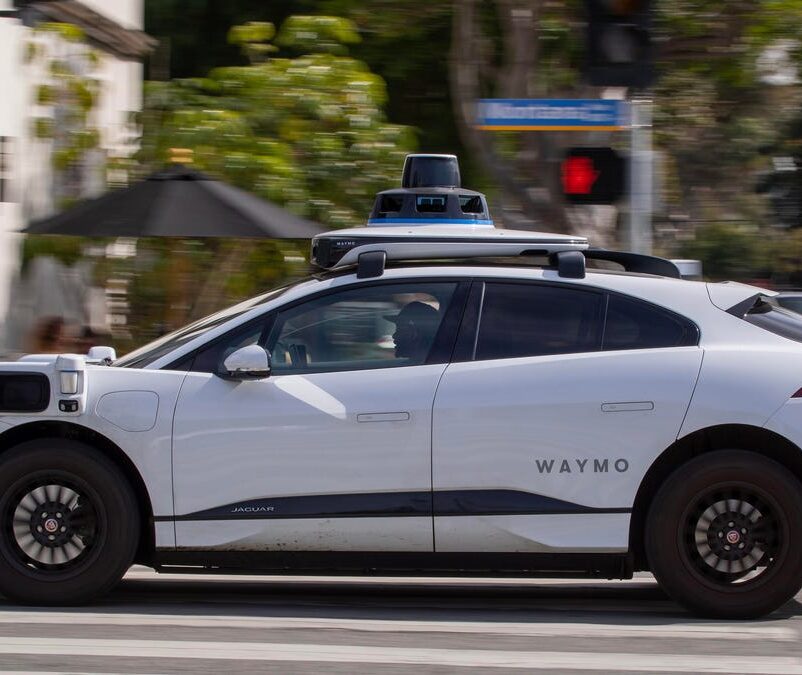
Passengers ride in an electric Jaguar I-Pace car outfitted with Waymo full self-driving technology in Santa Monica.
Los Angeles Times via Getty Images
Waymo, Alphabet Inc.’s multibillion-dollar bet on self-driving cars and trucks, is pulling the human safety drivers out of its robotaxi test fleet in Los Angeles as it works to launch a commercial ride service in the second-biggest U.S. city.
The Mountain View, California-based company, which began testing electric Jaguar I-Pace crossovers loaded with cameras, lidar and other sensors in the sprawling city last October, will begin running them as “fully autonomous” cars in the next few weeks, initially in Santa Monica, Mauricio Peña, Waymo’s chief safety officer, told Forbes. The trials will occur initially in Santa Monica, with other neighborhoods to follow.
“We’re starting with a dense urban area and are going to expand and scale after we do this initial testing,” Peña told Forbes, without elaborating on when paid public rides might start. “We’re not providing a time line for Los Angeles right now, but are definitely doing all the steps we need to be ready to launch our commercial service.”
Progress for autonomous vehicles has been markedly slower than advocates imagined five or six years ago. A shakeout in the industry began last year when Ford and Volkswagen unexpectedly pulled the plug on Argo AI, their joint-venture autonomous tech startup, in October. Analysts and industry insiders expect more startups to fold this year as steep funding requirements and a longer-than-planned path to commercialization make it a less compelling bet. And though Waymo is among the most well-funded autonomous tech programs, it wasn’t spared from recent job cuts by Alphabet in recent weeks.
Still, with its paid ride service in the Phoenix area, the first of its kind in the U.S., and an upcoming commercial launch in San Francisco and L.A. to follow, Waymo is forging ahead. Still, aside from fine-tuning its AI-enabled software, the company can’t launch paid rides anywhere in California until the state’s Department of Motor Vehicles issues a permit allowing that.
In a test ride Forbes took with Waymo this month in Santa Monica, with a human backup driver behind the wheel, the vehicle showed improvement over earlier rides in suburban Phoenix, with no unexplained hard braking incidents or excessively cautious left turns. Still, the vehicle occasionally drew irritated honks from Angelenos driving behind, who wanted it to be less cautious at a couple of intersections. Those are the types of issues Waymo is working on daily, said Peña, who worked on spacecraft safety systems before joining Waymo.
“Safety is our priority; it’s our focus,” he said. “We also want to be good road citizens and be able to delight our riders, as well as keep them safe. That’s an area that we always pay attention to and are continuously improving.”

